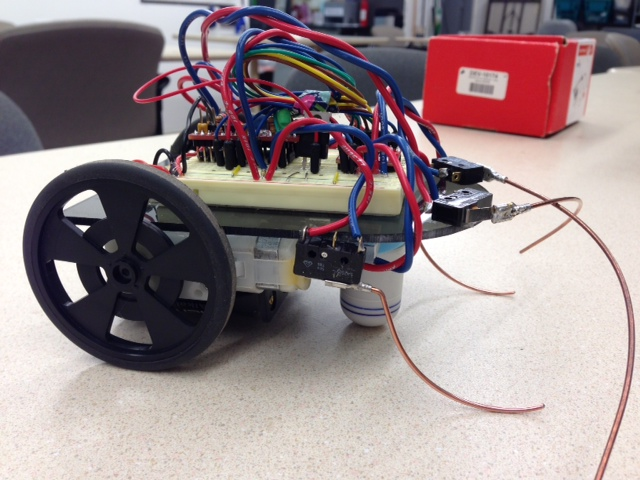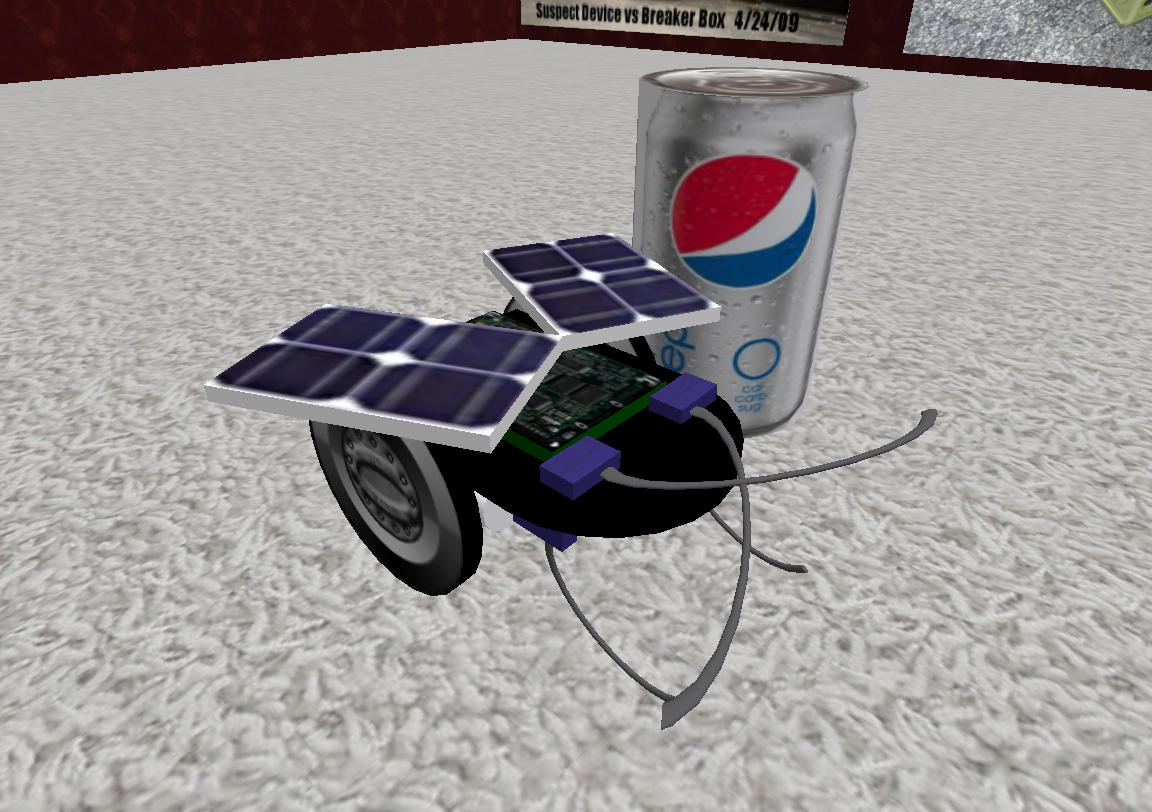-
Away We Go!
07/01/2014 at 03:29 • 0 commentsNow that we had settled on our motors and basic layout, it was time to construct the first prototype machine.
![]()
We decided to keep the electronics on the breadboard for the time being to make the inevitable changes and revisions easier. Simple microswitches with welding wire feelers provide obstacle detection up front, while a second pair feel the surface in front of the 'bot (now dubbed Johnny) to keep it from falling of the edge of a table, or down a flight of stairs if it's on the floor. If it senses something, it's programmed to stop, back up, and turn away from the obstacle before continuing on. It worked...kinda. Johnny was rather inconsistant. After a few minutes, it would get stuck in one of it's behaviors. Running full speed into things, turning endless circles, and even things that we hadn't even programmed into it, like running full speed in reverse. Of the many possibilities, it was widely believed that the obstacle avoidance script was to blame. Our Fearless Leader freely admits that he is no programmer, and the code he came up with was admittedly half plagerized, half baked, and half finished. Johnny was handed over to Jenny Tong, the lead programmer, and Justin Conroy and Derek Bever also decided to jump in and try to straighten out the mess. While they were unraveling that mess, Greg concentrated on building Frankie, Johnny's twin brother.
-
Let's Roll
07/01/2014 at 02:31 • 0 commentsAfter getting the basic circuitry nailed down, it was time for another motor test. The Solarbotics motors we decided on came in two different gear ratios. It was a bit hard to visualize how fast the robots would be, or how much torque was going to be required to move them. So, when we got the motor and wheel combo deal, we got a set of both the slower, high torque motors and the faster, lower torque ones. The prototypes weren't off the breadboard yet, let alone programmed, so we grabbed a piece of acrylic, a battery pack, the motors and wheels, and a cheap RC toy (the kind you charge from a USB port and run around on your desk when the boss isn't around). The toy didn't seem to mind it's role as organ donor, and we soon had the RC hooked up to the motors and batteries to create one of the ugliest little machines ever built...
![]()
As ungainly as it looked, it worked. We ran it around on the floor with both types of motors to get some sense of what each type was capable of. The slower motors were a bit, well, slow, and since we weren't going to be taking the 'bots offroading, we opted for the faster motors to power the prototypes.
-
Getting Started!
07/01/2014 at 02:05 • 0 commentsSince this project was started before the HackadayPrize was announced, our first project log entry will be more of a 'how we got to here' summation than an actual update. The first thing we did for this project was to make a quick 3D computer model of what the 'bots might look like...
![]()
For being a quick and dirty model, it came out surprisingly close to how the prototypes came out in terms of both apperance and size.
After hunting around for appropriate parts, we gathered it all in a pile and breadboarded the drive circuitry. It didn't much look like a robot at this point, but the intention was to make the motors move and make sure the code library we were using would work with the motor driver board. Seeing the motors turn on and spin without an appearence by the Blue Smoke Monster was a relief.
The Emergence Project
An experiment in group machine intellegence (Or lack thereof...)


